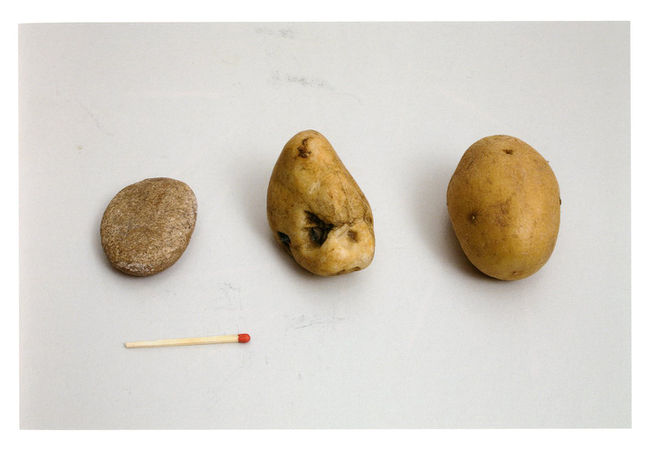User:Manetta/self-initiated-shift
shifts
shift to a new set of tools
As being educated to use the Adobe software masterpackage in the environment of Mac OSX, my former work has been produced and transmitted through the channels of InDesign, Photoshop, After Effects, Dreamweaver and a little bit of Illustrator from time to time. Next to these five giants, my toolset was supplemented with a basic set HTML+CSS lines. And: Fontlab, a piece of software to make typefaces and (e.g.) 'dynamic' ligatures with.
In the last 6 months, this set of tools has been supplemented with a programming language called 'python' , and mainly replaced with a new set of open-source tools (Scribus, Gimp, ImageMagick, Kdenlive), while working in the new environment of Debian. The convenience and faith that i had in the former environment is not erased (obviously), but still present in the route i take to search for options and tools which i was relying on before.
There are different arguments to give for this shift of environment. Firstly I found Debian+Gnome very comfortable to work with, especially the split screen option that is under the "cmd+arrow-key" shortcut brings a very clear organization to the screens that are open. This is related also with a shift of work-method: while desiging in (HTML+CSS) code for example, the way of working is a constant shift between the text-editor and the browser. When having them in split-screen-view, it is very comfi.
Secondly there is a certain set of cultural principles present in the open-source community that I feel attracted to. To name a few: distribution vs. centralization, question-answer documentation-pages online, and the open availability of 'cultural' information (also called knowledge) in the sense that is should not only be available but also legible.
Using Linux is a way to be not fully depended on the mega-corporations. Although my private emailadress is still stored on servers owned by Google, my facebookaccount is there, and i'm following a set of people on Twitter, my professional toolset is not depended anymore on the discissions that Apple and Adobe will make in the future. That is a relief.
shift to design-perspective
A quite consious shift of focus from an interest in linguistics, towards my graphic design background, could be a step that would bring me closer to develop a more specific topic of research.
In the last 6 months, i've been looking at different tools that are working with language in various ways:
- alternative counting systems, to represent color (Hexidecimal - a numeral system with a base of 16: 0,1,2,3,4,5,6,7,8,9,A,B,C,D,E,F)
- interpreting the human voice (CMU Sphinx - speech to text software)
- mimicing the human voice (text to speech software)
- interpreting digital written documents (Tesseract - a piece of character recognition software)
- using semantic structures as linking system (the idea of the Semantic Web - a metadata method of linking information)
- using subtitle files as edition resource (Videogrep - a video editor based on different types of search-queries)
- recognizing patterns in written documents (Pattern - a text mining tool)
- representing language structures in a dataset (WordNet - a lexical database)
With a working method of opening up the software folders, and looking at the different elements and e.g. dictonaries these tools use, i've been approaching them in quite a formal way, in the sense of 'getting to understand what's happening' through practise.
Next to that, I've been looking at human-to-hardware interface gestures (clicking & swiping), what ideologies could be related to them, and how this could be visualized. It resulted in a browser-based game called 'fingerkrieg', where the player is challenged to click/swipe as many times as possible in 15 seconds.
It was by a kind of coincidence that i stumbled upon a device called 'Amazon Echo', an artificial intelligence machine that one could put in one's living room. It uses voice commands, and so a speech-to-text software that is embedded in the system. And, as it speaks back with a text-to-speech element, after it dealed with the requested information by using linked data, i felt that my interests where coming together.
Though as coming from a background of graphic design, i believe these tools are not that far from 'practising graphic design'. Graphic design is a multi-layered methodology for communication, by considering 'order', 'legibility', 'composition', & 'connotation'—and many other elements which could be part of this list.
A subject as AI is, in its very broad being, could be more interesting perhaps when perceived from a design perspective: considering how 'an human simulation' or 'feeling empathy for an interface' could be considered as a element of design. And in the same sense, it would be an exciting challenge to let the other linguistic tools be a response to graphic 'challenges'.
By combining the linguistic interest with my design methodologies could be a way to develop myself towards a more specific topic of research. To do that, i would like to look at 'self-reflective-design' (how Manuel Bürger calls it in his essay 'Slippery Design (2011)), a way of meaning-making method. The book 'A not B' of Uta Eisenreich is a piece of work that relates to this method.
My main topic of research could then be: 'graphic design', 'meaning making' , or 'meaning through making'.
(some notes on design from 2009: http://manettaberends.nl/ThoughtsAboutDesign.html)


